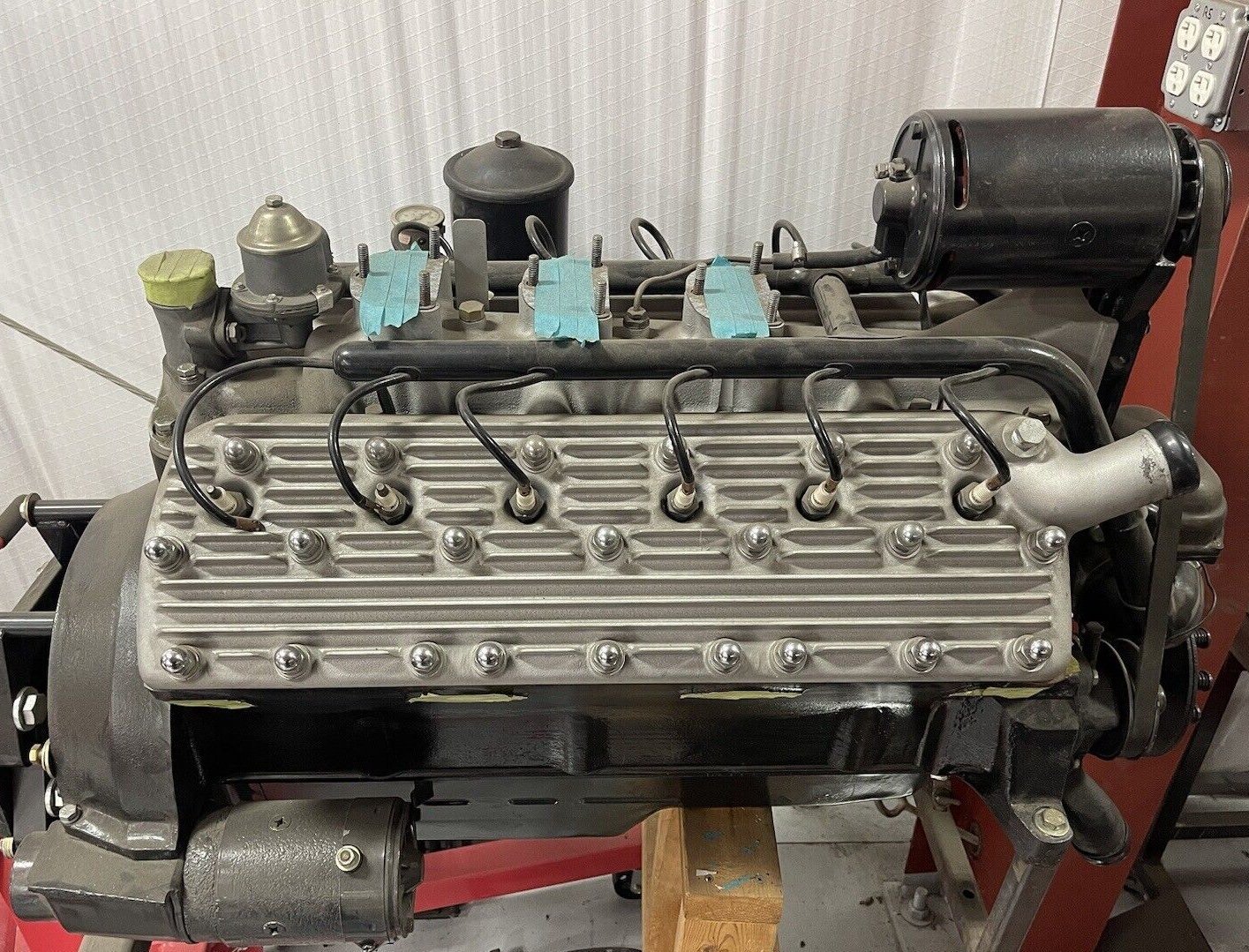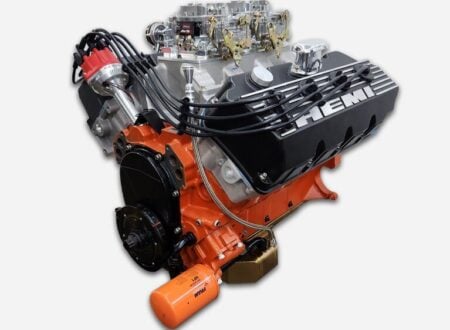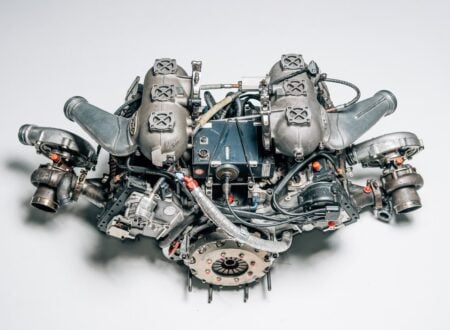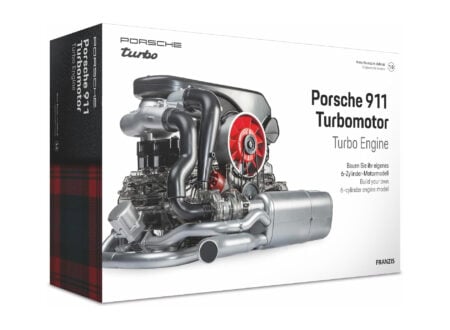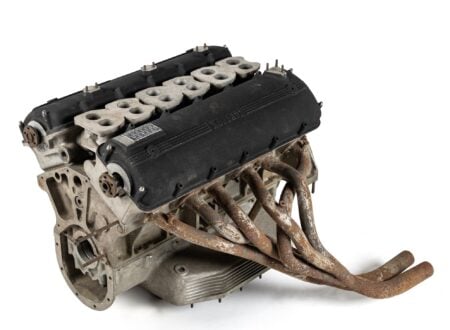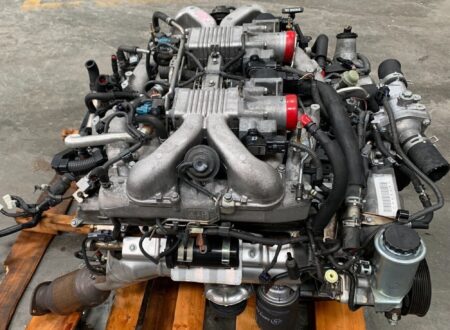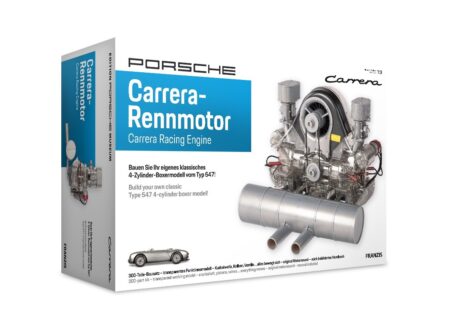This is a Lincoln-Zephyr V12 that benefits from a recent full rebuild by the specialist Mike Herman at H&H Flatheads. It’s now being sold on eBay with a Buy It Now price of $14,500 USD – and it’s ready to be bolted into a car and put on the road.
There were three Lincoln V12 versions made, by far the most common is the variant that debuted in 1936 for the Lincoln-Zephyr, a 75º L-head (flathead) V12 that shared much of its design with the earlier Ford Flathead V8 which had arrived on the scene in 1932.
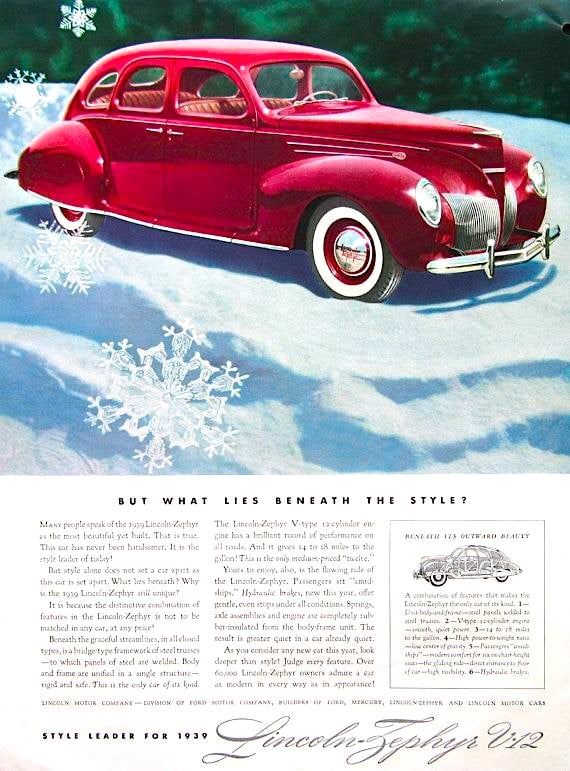

It would be this 1936 Lincoln-Zephyr H Series V12 that would have the largest impact on the world, it was even used in some production cars across the Atlantic in England, and it would reenter production after WWII for a number of years.
The key to the success of the H Series V12 was its relative simplicity, though early versions did have their foibles. A series of design changes were introduced in the second year of production, 1937, to address them.
Early 1936 engines suffered from insufficient crankcase ventilation which could lead to a build up of sludge, blocking oil flow. The water passages on these engines were also too narrow, this resulted in poor cooling, which eventually could cause overheating, ring wear, and warpage.
In 1938 hydraulic valve lifters were introduced, and the displacement of the engine was improved over time to boost power output.
Lincoln-Zephyr V12 Variants
The first engines in 1936 had a displacement of 267 cubic inches (4.38 liters), with aluminum heads and 110 bhp with 180 lb ft of torque.
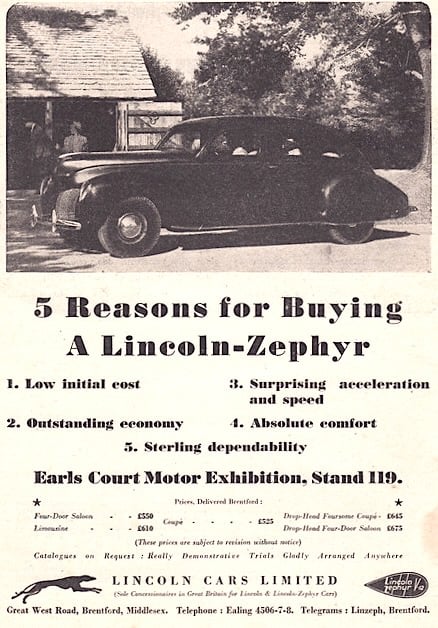

In 1940 the displacement was increased to 292 cubic inches (4.79 liters), this increased both power and torque, though by how much is a matter of open debate.
This engine would remain in production in 1940 and 1941, then production would be paused during WWII as factories were switched over to producing vehicles and supplies for the war effort.
This 292 cubic inch V12 would be brought back after the war in 1946 and produced until 1948 with a handful of changes, including a twin barrel carburetor and a 7.2:1 compression ratio.
There would be a 306 cubic inch (5.01 liter) version made in 1942, it was only in production for a single month. It was be brought back into production in 1946 however it quickly became apparent that the block had been over-bored making the cylinder walls too thin, resulting in reliability issues.
As a result of these problems, production switched back to the 292 cubic inch version, and this version remains highly desirable with collectors today.
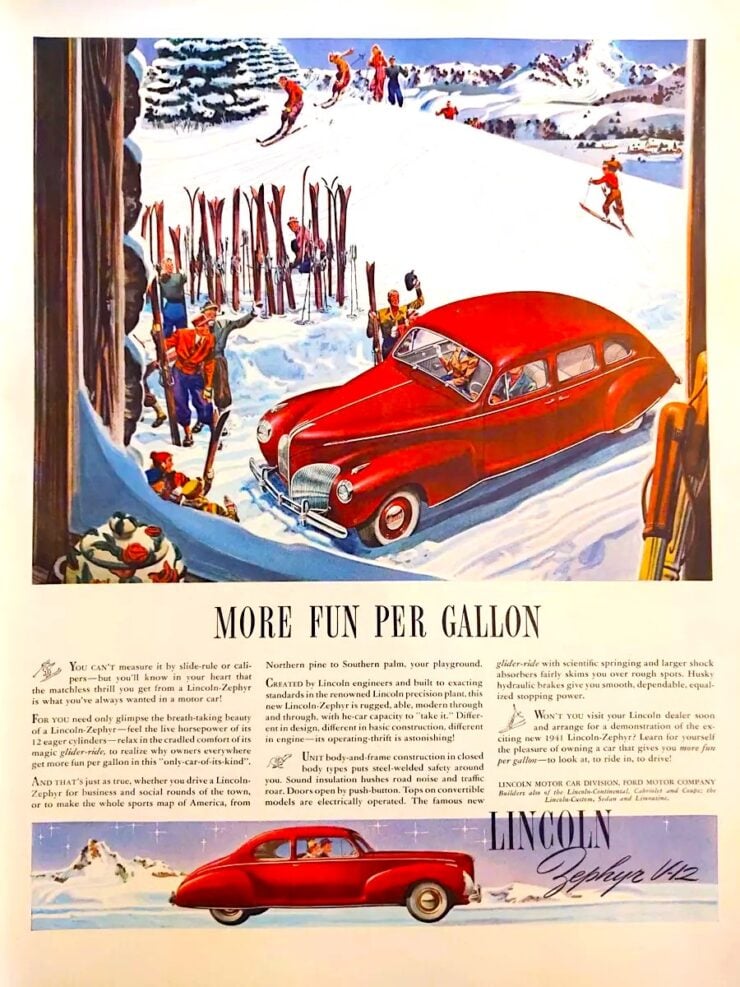

Lincoln’s Return To V8s
After 1948 the Lincoln-Zephyr H Series V12 was replaced with a version of the InVincible 8. This was the largest-displacement version of the Ford Flathead V8, measuring in at 337 cubic inches (5.5 liters), that had previously been used for large truck service.
The InVincible 8 offered good power output and reliability, and it would be used for a number of years before being replaced by the more modern Lincoln Y-block 317 cubic inch (5.2 liter) overhead valve V8 in 1952.
The Lincoln-Zephyr V12 Flathead Engine Shown Here
The engine you see here is a desirable 1940 Lincoln-Zephyr V12, from this year on the displacement was increased from 267 cubic inches (4.38 liters) to 292 cubic inches (4.79 liters), and the reliability issues that plagued earlier engines had been resolved.
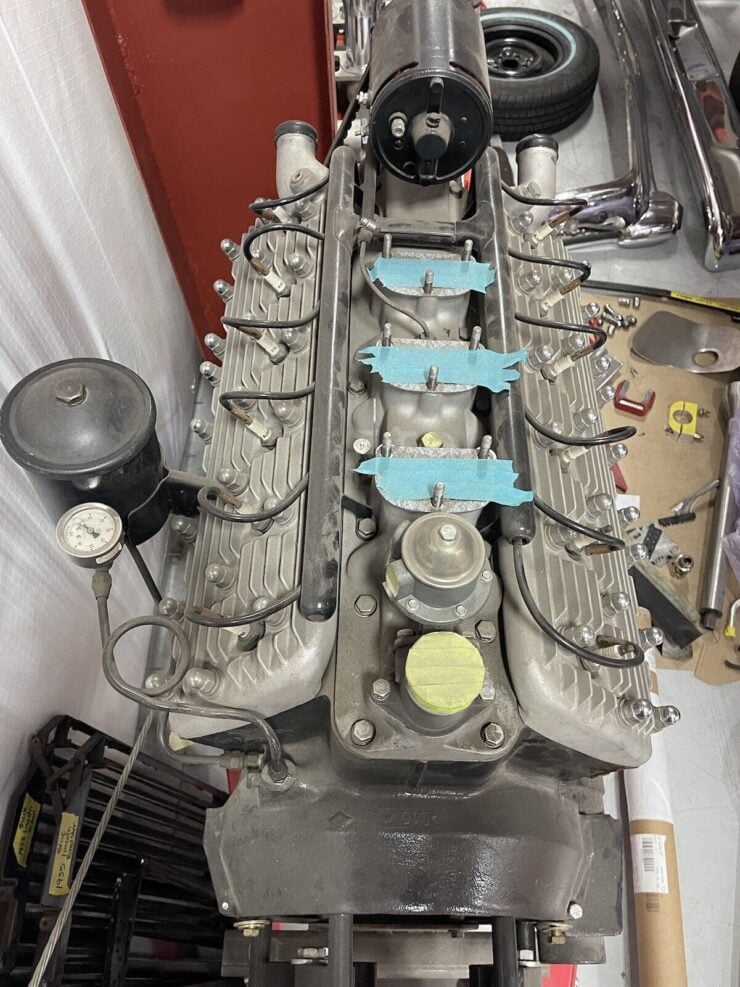

This engine has been completely rebuilt by Mike Herman at H&H Flatheads, an internationally renowned expert, and it now benefits from the fitment of H&H Flatheads finned heads and an H&H Flatheads intake manifold, both new castings made from aluminum.
It’s now being offered for sale on eBay out of Georgetown, Texas, Wirth economy shipping offered at $500 USD. The engine itself has an asking price of $14,500 USD and you can visit the listing here if you’d like to read more about it or register to bid.
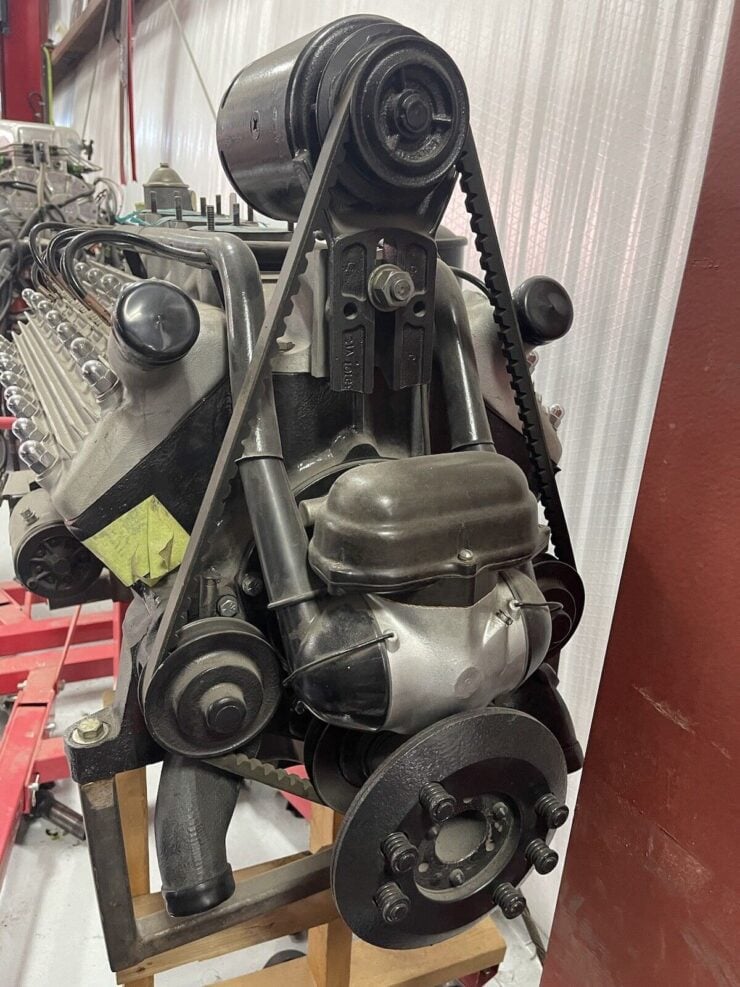
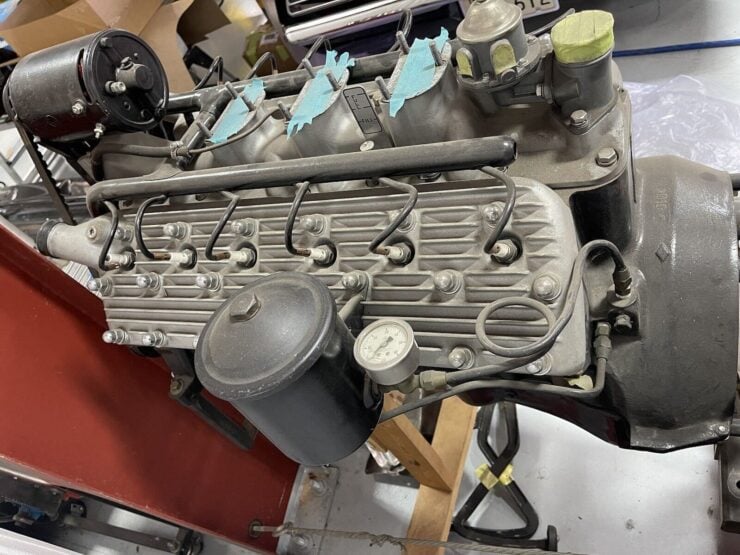
Image courtesy of eBay Motors

